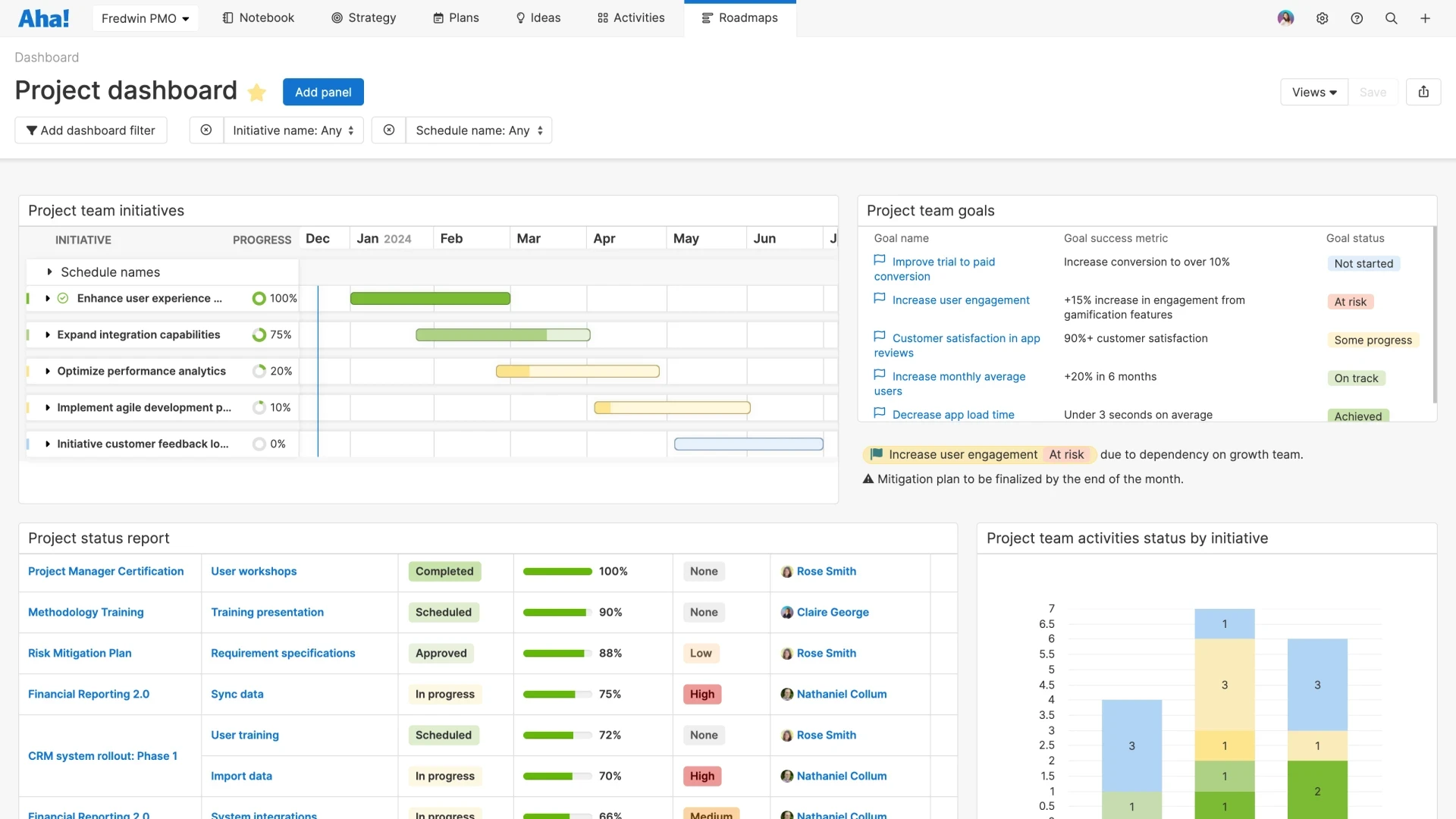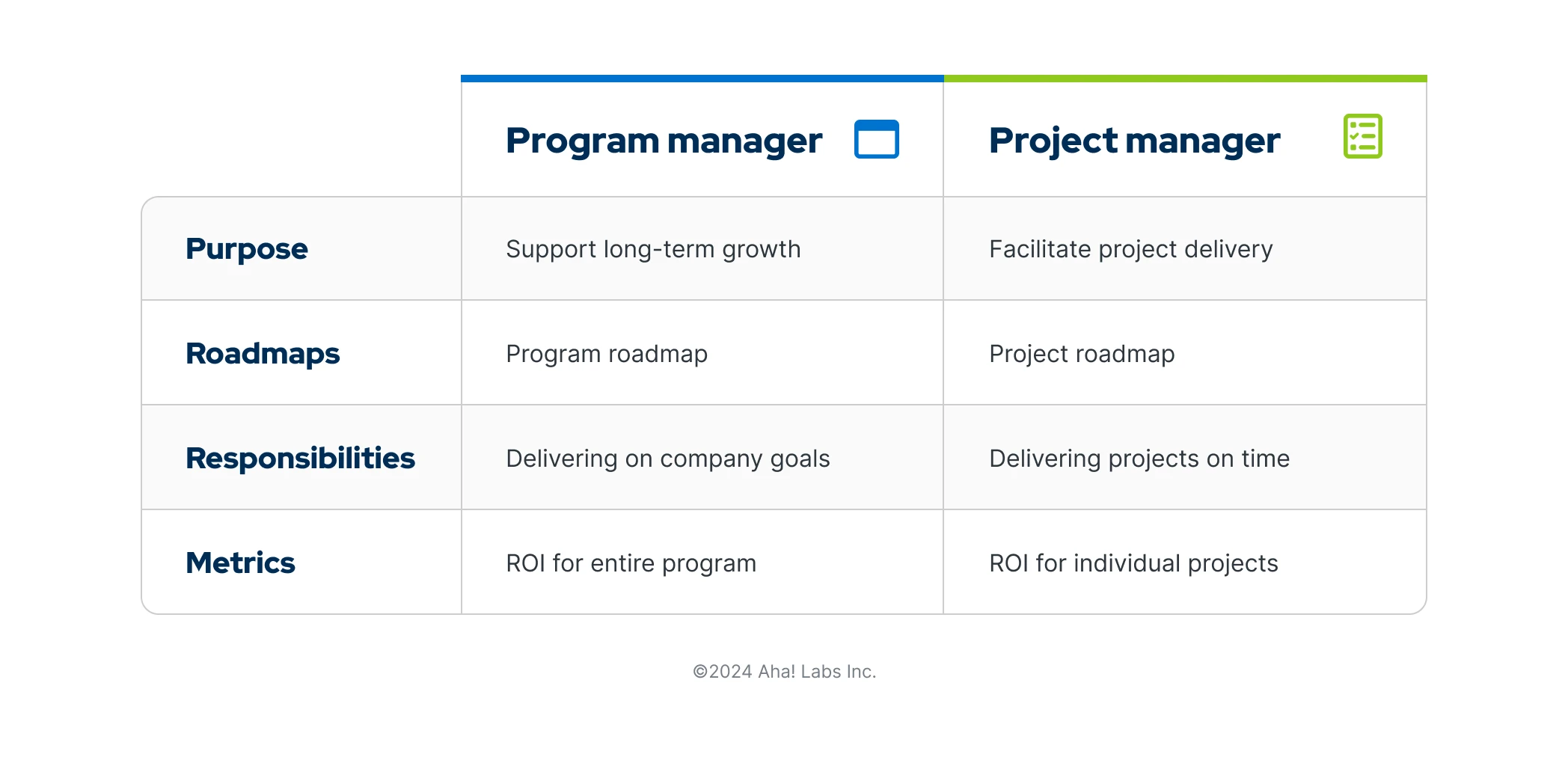What is program management?
Last updated: April 2024
Have you ever worked with a program manager? If you are in product or project management at an enterprise software company, chances are that you have — either directly or indirectly. It is a fairly common role at large organizations with extensive product offerings and numerous teams. And yet, many folks find the details of program management to be hazy (which is true whether you are in close proximity to it or not.)
This is partly due to the broad scope of the role, but also because of its shared similarities with portfolio management and close collaboration with both product management and project management. When you have all of these functions working within an organization, it can be easy to mix things up.
So let's straighten them out. If you are curious about what program management really is, this guide will help you understand the basics — including some specific examples. Use the following links to jump ahead to a specific section:
What is a program (in program management)?
Let's start with the building blocks of program management: programs. A program refers to a collection of related projects that are managed together in order to achieve long-term business objectives. Grouping buckets of work under one program helps make large-scale efforts more cohesive. In turn, this helps program managers track progress and ROI broadly across an initiative (vs. individual projects).
Programs often represent a major strategic investment or change for a company. An example of a program could be embarking on digital transformation, rolling out a tech stack across the enterprise, or developing a new partnership program. Because efforts like these require multiple discrete efforts to complete, program timelines are typically longer and more fluid than a project schedule — sometimes requiring multiple years to complete. But in general, programs move through a similar lifecycle as projects with distinct phases.
Here is a brief overview of the program management lifecycle:
Program management lifecycle stage | Definition |
Program definition | Program objectives, scope, stakeholders, and resources are defined in collaboration with company leadership. Project teams are prepped to begin work on individual efforts to support the program. |
Program delivery | Planned projects and activities are implemented to deliver on the program. This involves managing resources, monitoring progress, and addressing any roadblocks that arise across projects within the program. Changes in scope and decisions are documented along the way. |
Program closure | After completion, program outcomes and ROI are evaluated against the initial goals. Any issues are considered as process improvements for future programs. |

Program management involves coordinating multiple projects as part of a major initiative. The project dashboard in Aha! Roadmaps can help you track progress, resources, and delivery across many project efforts at once.
What is program management?
Program management is the process of overseeing a program, or a set of related projects, to completion. It has a broad scope by design — program management handles the "big picture" of major initiatives by coordinating cross-functional efforts to achieve the business strategy. This frees up functions such as project and product management to keep a tighter focus on their core responsibilities.
Where project management success is evaluated by on-time and on-budget delivery, program management is focused on ROI. This can be challenging, as program impact can vary widely — from revenue growth to operational efficiency. In many cases, program management is tasked with defining what success will look like at the program's onset.




